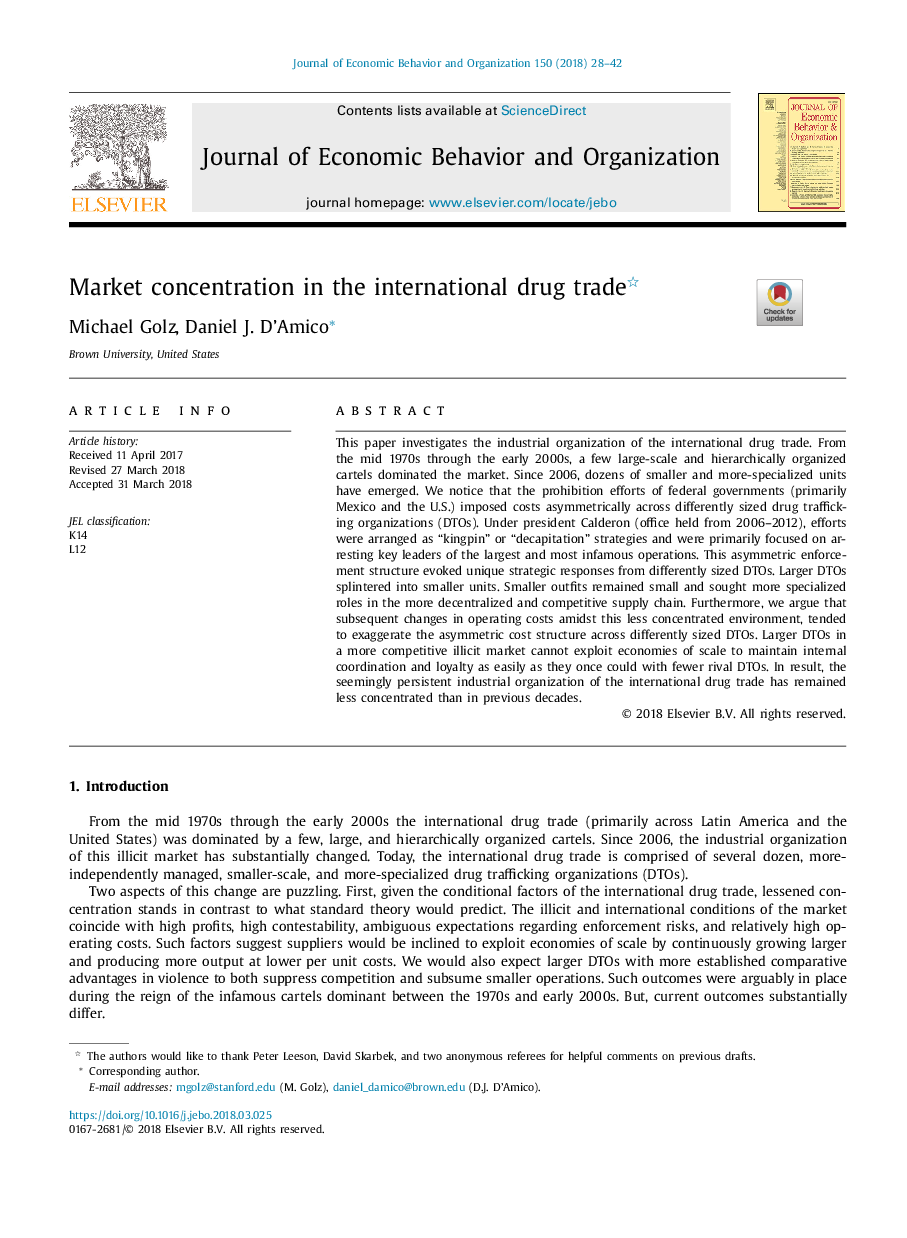| Article ID | Journal | Published Year | Pages | File Type |
|---|---|---|---|---|
| 7242502 | Journal of Economic Behavior & Organization | 2018 | 15 Pages |
Abstract
This paper investigates the industrial organization of the international drug trade. From the mid 1970s through the early 2000s, a few large-scale and hierarchically organized cartels dominated the market. Since 2006, dozens of smaller and more-specialized units have emerged. We notice that the prohibition efforts of federal governments (primarily Mexico and the U.S.) imposed costs asymmetrically across differently sized drug trafficking organizations (DTOs). Under president Calderon (office held from 2006-2012), efforts were arranged as “kingpin” or “decapitation” strategies and were primarily focused on arresting key leaders of the largest and most infamous operations. This asymmetric enforcement structure evoked unique strategic responses from differently sized DTOs. Larger DTOs splintered into smaller units. Smaller outfits remained small and sought more specialized roles in the more decentralized and competitive supply chain. Furthermore, we argue that subsequent changes in operating costs amidst this less concentrated environment, tended to exaggerate the asymmetric cost structure across differently sized DTOs. Larger DTOs in a more competitive illicit market cannot exploit economies of scale to maintain internal coordination and loyalty as easily as they once could with fewer rival DTOs. In result, the seemingly persistent industrial organization of the international drug trade has remained less concentrated than in previous decades.
Related Topics
Social Sciences and Humanities
Economics, Econometrics and Finance
Economics and Econometrics
Authors
Michael Golz, Daniel J. D'Amico,
